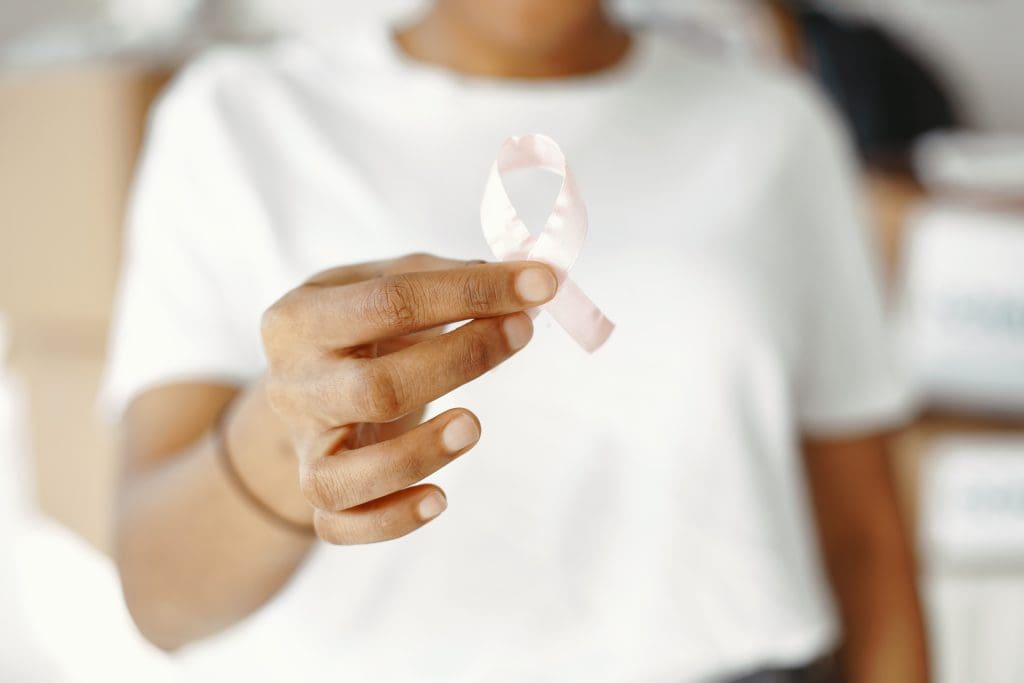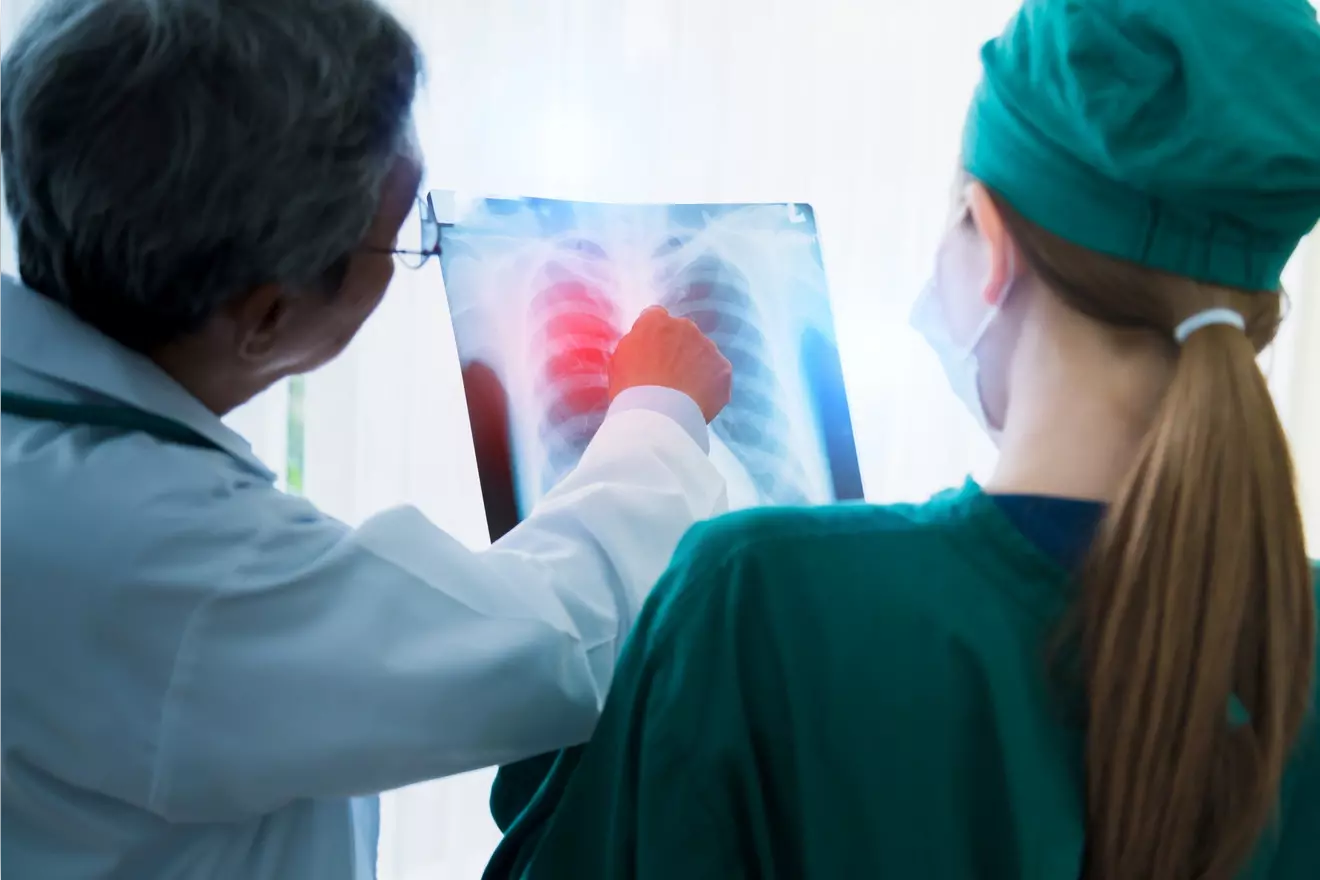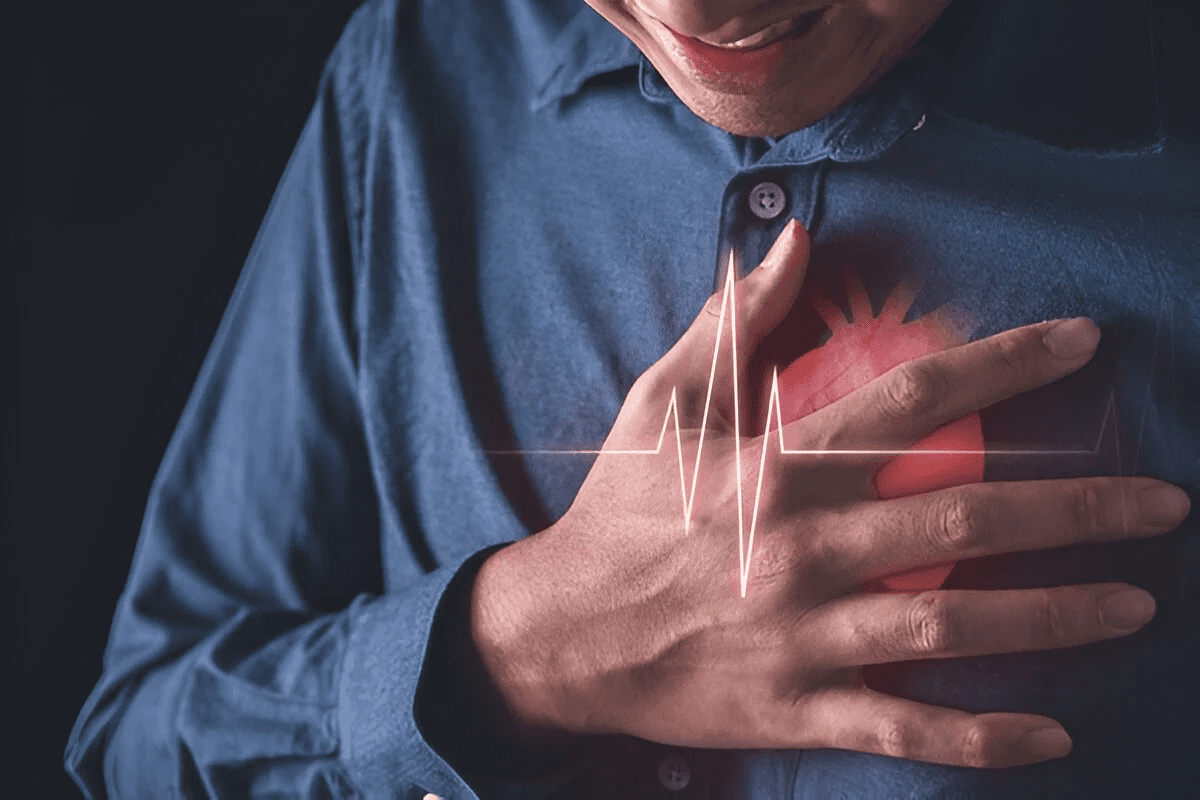Last Updated on November 27, 2025 by Bilal Hasdemir
What makes cancer more likely? Cancer is a complex disease that affects millions worldwide. A startling 1 in 3 people will develop cancer in their lifetime. This shows how important it is to know what causes it.
The growth of cancer is shaped by genetics, lifestyle, and environment. Knowing these risk factors helps in preventing and catching cancer early.
Key Takeaways
- Cancer is a multifactorial disease influenced by genetics, lifestyle, and environment.
- Understanding risk factors is key to prevention and early detection.
- Lifestyle choices and environmental exposures play a significant role in cancer development.
- Genetic predisposition is a significant risk factor for certain types of cancer.
- Early detection through screening can significantly improve cancer survival rates.
Understanding Cancer: The Basics

To understand cancer, we must look at its basic biology. This includes how normal cells turn into cancer cells through mutations. Cancer is a disease where cells grow and spread without control. It’s a major cause of death globally, growing due to aging, lifestyle changes, and environmental factors.
What is Cancer and How Does it Develop?
Cancer starts when normal cells get genetic mutations that mess up their function. These changes can come from genes passed down or from the environment. As a result, cells start growing out of control, forming tumors that can spread to other parts of the body.
“Cancer is a genetic disease, caused by changes in genes that control cell growth and division.” These changes can cause cells to make bad proteins and disrupt normal cell functions. This leads to cancer.
The Process of Cell Mutation and Proliferation
The key to cancer is how cells mutate and grow. First, a cell gets a mutation that lets it grow faster than normal cells. As it keeps dividing, more mutations happen. This leads to cells becoming more cancerous.
- Genetic mutations cause cells to grow without control.
- Cells with good mutations grow more and spread.
- Tumors form and can spread to other areas.
Knowing how cancer works is key to finding treatments and ways to prevent it. By understanding what causes cancer, we can lower our risk. can also find and help those at high risk sooner.
What Causes Cancer: The Fundamental Mechanisms
To understand cancer, we must look at its basic causes. Cancer is a complex disease. It involves many genetic and environmental factors.
DNA Damage and Genetic Mutations
DNA damage and genetic mutations are key in starting and growing cancer. When DNA gets damaged, cells try to fix it. If they can’t, it can cause mutations.
These mutations can turn on genes that help cancer grow or turn off genes that stop it.
The Role of Oncogenes and Tumor Suppressor Genes
Oncogenes and tumor suppressor genes control how cells grow and divide. Oncogenes, when changed or too active, can make cells grow too much. This can lead to cancer.
Tumor suppressor genes, on the other hand, slow down cell division. If they’re not working right, cells can grow out of control.
| Gene Type | Normal Function | Cancer-Related Alteration |
| Oncogenes | Promote cell growth and division | Mutation or overexpression leading to excessive cell proliferation |
| Tumor Suppressor Genes | Inhibit cell growth and division | Inactivation or underexpression resulting in uncontrolled cell growth |
The balance between oncogenes and tumor suppressor genes is vital. It keeps cells working right. When this balance is broken, often by genetic changes or environmental factors, cancer can start.
Knowing how these mechanisms work is key to fighting cancer. It helps us find ways to prevent and treat it.
Genetic and Hereditary Risk Factors
Genetic and hereditary factors can greatly affect the chance of getting cancer. Knowing these risks is key for catching cancer early and preventing it.
Inherited Gene Mutations
Some cancers are linked to inherited gene mutations. For example, BRCA1 and BRCA2 gene mutations raise the risk of breast and ovarian cancers. These genes are passed down, making family history very important in cancer risk assessment.
A study on SOX2 in advanced prostate cancer shows how genetics and cancer are connected.
Family History and Cancer Susceptibility
Family history is a big part of figuring out cancer risk. People with a family history of certain cancers might be more at risk. For instance, someone with a close relative having colon cancer might face a higher risk of colorectal cancer.
Genetic Testing for Cancer Risk
Genetic testing can spot inherited mutations that raise cancer risk. This lets people take steps early to prevent cancer. Tests for BRCA1 and BRCA2 can show a person’s risk level and help them make health choices.
People with a big family history of cancer should talk to about genetic testing and prevention.
Age as a Risk Factor for Cancer Development
Most cancer cases are found in people over 65. This shows how important age is as a risk factor. As more people live longer, it’s key to understand how age affects cancer risk. This helps in making better health strategies for everyone.
Why Cancer Risk Increases with Age
Cancer risk goes up with age for several reasons. These include more exposure to harmful substances and less ability to fix DNA damage. Cells in the body build up genetic damage over time, which can cause cancer. Older cells also change in ways that can mess up how they work.
The aging process makes it harder for the body to control cell growth. This means older people are more likely to get cancer. Their bodies can’t stop tumors from forming as well as they used to.
Age-Related Cancer Statistics and Patterns
Statistics show that cancer rates go up a lot with age. The National Cancer Institute says the average age for a cancer diagnosis is 66. About 86% of cancers happen in people over 50. Knowing these patterns helps in focusing screening and prevention efforts.
- Cancer rates are highest in people 65 and older.
- The risk of getting certain cancers, like prostate, breast, and colon cancer, goes up a lot with age.
- Changes in cancer rates with age differ among groups. They are influenced by lifestyle, environment, and genes.
Looking at age-related cancer stats helps researchers and understand cancer risk better. They can then work on ways to lower this risk.
Environmental Carcinogens and Exposure Risks
It’s important to know about environmental carcinogens to lower cancer risks. These are substances that can cause cancer and are found everywhere around us.
Radiation Exposure
Radiation is a big environmental carcinogen. It comes from the sun, X-rays, and radioactive materials. Too much radiation can harm our DNA and lead to cancer.
Sources of Radiation Exposure:
- UV radiation from the sun or tanning beds
- Medical imaging procedures like X-rays and CT scans
- Radioactive materials in the environment or workplace
Chemical Carcinogens in the Environment
Chemical carcinogens are substances that can cause cancer. They are in pollutants, industrial products, and some household items.
Examples of Chemical Carcinogens:
- Benzene, found in gasoline and industrial emissions
- Formaldehyde, used in resins and certain building materials
- Pesticides and herbicides used in agriculture
Workplace Carcinogens and Occupational Risks
Many workers face cancer risks at work. This is due to exposure to carcinogens in industries like construction, manufacturing, and healthcare.
| Industry | Common Carcinogens |
| Construction | Asbestos, silica dust |
| Manufacturing | Benzene, vinyl chloride |
| Healthcare | Ionizing radiation, certain chemotherapy drugs |
Knowing these risks helps us prevent occupational cancers. It’s key for keeping workers safe.
Lifestyle Factors That Increase Cancer Risk
Certain lifestyle choices can greatly increase or decrease cancer risk. Factors like tobacco use, alcohol, diet, exercise, and obesity are key. By changing these, people can lower their cancer risk.
Tobacco Use and Smoking
Tobacco is the top cause of preventable cancer deaths globally. Smoking is linked to lung, throat, and mouth cancers. The chemicals in tobacco smoke damage DNA, causing cancerous mutations. Quitting smoking can greatly lower the risk of these cancers.
Alcohol Consumption
Alcohol is another big risk factor for cancer. It increases the risk of liver, breast, and esophageal cancers. Alcohol’s cancer risk comes from DNA damage and harmful compounds made during its breakdown.
Diet and Nutrition
Eating too much processed food and not enough fruits and veggies raises cancer risk. A diet full of antioxidants and fiber can protect against cancer. Eating like the Mediterranean diet can lower the risk of many cancers.
Physical Inactivity and Obesity
Being inactive and obese are big cancer risks. Regular exercise can lower the risk of colon, breast, and other cancers. Obesity raises the risk of breast, kidney, and pancreatic cancers due to inflammation and hormonal changes.
Infectious Agents as Cancer Triggers
Some viruses, bacteria, and parasites can increase the risk of certain cancers. It’s important to know how these agents work to prevent and treat cancer.
Viruses Linked to Cancer
Many viruses are directly linked to different cancers. For example, Human Papillomavirus (HPV) causes cervical cancer and other cancers. Hepatitis B and C viruses lead to liver cancer. The Epstein-Barr Virus (EBV) is linked to Burkitt’s lymphoma and nasopharyngeal carcinoma.
These viruses work in different ways to cause cancer. Some viruses change the host’s genome, disrupting cell function. Others help cells grow and live longer, raising the chance of cancer.
Bacterial and Parasitic Infections Associated with Cancer
Some bacteria and parasites also raise cancer risk. Helicobacter pylori, which causes stomach ulcers, is linked to gastric cancer. It does this through chronic inflammation and making harmful compounds.
Parasitic infections, like Schistosomiasis, increase bladder cancer risk. The parasite’s eggs in the bladder wall cause chronic irritation, leading to cancer.
| Infectious Agent | Cancer Type | Mechanism |
| Human Papillomavirus (HPV) | Cervical, Anogenital, Oropharyngeal | Viral integration, disruption of cell cycle |
| Hepatitis B and C | Liver Cancer | Chronic inflammation, cirrhosis |
| Helicobacter pylori | Gastric Cancer | Chronic gastritis, production of carcinogens |
| Schistosomiasis | Bladder Cancer | Chronic irritation, inflammation |
Knowing how infectious agents cause cancer is key to preventing and treating it. This knowledge helps us create vaccines and screening programs to lower cancer rates.
Hormonal Influences on Cancer Development
Hormones play a big role in how our bodies work. When they get out of balance, it can affect our risk of getting cancer. Knowing how hormones impact cancer risk helps us find ways to prevent it.
Estrogen, Testosterone, and Cancer Risk
Estrogen and testosterone are two hormones that scientists have studied a lot. Estrogen is linked to a higher risk of breast and uterine cancers. Testosterone’s role is more complicated. Some studies say low levels might raise cancer risk, while high levels could increase prostate cancer risk.
Hormone Replacement Therapy and Cancer
Hormone replacement therapy (HRT) helps with menopause symptoms. But, it can also raise the risk of breast and uterine cancers. The risk depends on the type of HRT and how long you use it.
| Hormonal Factor | Cancer Type | Risk Association |
| Estrogen | Breast Cancer | Increased risk with high levels |
| Testosterone | Prostate Cancer | Increased risk with high levels |
| Hormone Replacement Therapy | Breast, Uterine Cancer | Increased risk, varies by HRT type and duration |
Immune System Function and Cancer Susceptibility
When the immune system doesn’t work right, it can make us more likely to get cancer. The immune system helps keep cancer at bay. If it’s not working well, we’re at higher risk.
Impact of a Weakened Immune System on Cancer Risk
A weak immune system can’t fight off cancer cells as well. This makes it a big risk for getting cancer. People with HIV/AIDS or those on immunosuppressive therapy are at higher risk.
The immune system is key in finding and getting rid of cancer cells. If it can’t do this, cancer cells can grow unchecked. Immunotherapy is a treatment that boosts the immune system to fight cancer.
Autoimmune Conditions and Cancer Risk
Autoimmune diseases, where the immune system attacks the body, can increase cancer risk. For example, people with rheumatoid arthritis are more likely to get lymphoma.
| Autoimmune Condition | Associated Cancer Risk |
| Rheumatoid Arthritis | Lymphoma |
| Lupus | Lymphoma, Leukemia |
| Hashimoto’s Thyroiditis | Thyroid Cancer |
Knowing how autoimmune diseases and cancer are linked can help in early detection and prevention. Scientists are studying this to find new ways to treat and prevent cancer.
Specific Risk Factors for Common Cancer Types
Different cancers have their own risk factors. Knowing these is key to catching cancer early and preventing it. This knowledge helps people take steps to avoid cancer and spot it early.
Lung Cancer Risk Factors
Lung cancer is a big killer worldwide. The main cause is smoking, which is behind 80-90% of lung cancer deaths. Other risks include secondhand smoke, radon, asbestos, and chemicals like arsenic and chromium.
Radon is a big risk for lung cancer, second only to smoking. It’s a radioactive gas that can build up in homes and buildings.
“Radon exposure is a significant risk factor for lung cancer, and testing for radon in homes is a critical step in prevention.”
American Lung Association
Colorectal Cancer Predisposing Factors
Colorectal cancer risks include age, family history, and genetic syndromes. Lifestyle factors like a diet full of red and processed meat, not moving enough, and being overweight also matter.
| Risk Factor | Description |
| Age | Risk goes up a lot after 50 |
| Family History | Having a first-degree relative with colorectal cancer |
| Diet | Eating a lot of red and processed meat |
Breast and Prostate Cancer Risk Factors
Breast cancer risks include genetic mutations (BRCA1 and BRCA2), family history, radiation, and hormones. Prostate cancer risks are age, family history, and genetics.
A study in the Journal of the National Cancer Institute found that men with a family history of prostate cancer are at higher risk. This is true if the relative was diagnosed young.
Pancreatic Cancer Risk Factors
Pancreatic cancer risks include smoking, being overweight, family history, and certain genetic syndromes. Chronic pancreatitis is also a big risk.
Smoking is the biggest risk for pancreatic cancer, causing 20-30% of cases.
- Smoking
- Obesity
- Family history of pancreatic cancer
- Genetic syndromes like BRCA2 mutations
Knowing these risk factors helps in preventing and catching cancer early. By tackling these risks, people can lower their chance of getting cancer.
Cancer Prevention Strategies
Preventing cancer is about making healthy choices, getting regular check-ups, and using vaccines and medicines. These steps can greatly lower your chance of getting cancer.
Lifestyle Modifications to Reduce Cancer Risk
Healthy living is key to preventing cancer. This means eating well and staying active. A good diet includes lots of fruits, veggies, and whole grains.
- Eating a diet low in processed and red meats
- Avoiding tobacco products and limiting alcohol consumption
- Staying physically active to maintain a healthy weight
These habits not only cut down cancer risk but also boost your overall health.
Screening and Early Detection
Screening and finding cancer early are vital. Regular tests can spot cancer when it’s easier to treat.
| Cancer Type | Recommended Screening | Frequency |
| Breast Cancer | Mammogram | Annually for women over 40 |
| Colorectal Cancer | Colonoscopy | Every 10 years for adults over 50 |
| Cervical Cancer | Pap Smear | Every 3 years for women between 21-29 |
Following these screening guidelines can greatly improve your chances of beating cancer.
Vaccines and Preventive Medications
Some vaccines and medicines can also help prevent cancer. For example, the HPV vaccine can stop cervical and other cancers linked to HPV.
- HPV vaccine for prevention of cervical and other HPV-related cancers
- Hepatitis B vaccine to prevent liver cancer
- Medications like tamoxifen for reducing breast cancer risk in high-risk individuals
Talking to your can help figure out the best prevention steps for you.
Understanding Individual Cancer Risk Assessment
Knowing your risk of getting cancer is key to staying healthy. It helps you make smart choices about your health. You might change your lifestyle or get screened early.
Risk Calculation Models
Risk models are advanced tools to guess your cancer risk. They look at many things like your genes, family history, lifestyle, and what’s in your environment.
- Genetic Predisposition: They check for genes that raise your cancer risk.
- Family History: Having cancer in your family can change your risk score.
- Lifestyle Factors: Your choices, like smoking, diet, and exercise, matter too.
Personalized Prevention Plans
After figuring out your cancer risk, you can get a plan just for you. This plan fits your risk factors. It might suggest lifestyle changes, screenings, and sometimes medicine or surgery.
Key Components of Personalized Prevention Plans:
- Lifestyle Changes: Eating better, moving more, and quitting bad habits like smoking.
- Screening and Early Detection: Regular health checks and tests to catch cancer early.
- Preventive Measures: Sometimes, removing polyps or doing mastectomies is part of the plan.
By understanding and acting on your cancer risk, you can lower your chances of getting cancer. This can lead to a longer, healthier life.
Conclusion
Knowing what causes cancer is key to lowering its numbers. Many things can lead to cancer, like genes, the environment, and how we live. By understanding these, we can start to prevent it.
To prevent cancer, we need to change our ways. This means eating right, not smoking, drinking less, and exercising. These steps help lower our risk of getting cancer.
Our own risks, like family history and genes, help us make plans to stay safe. Tests and models can help us figure out our own risk. This way, we can take steps to protect ourselves.
Preventing cancer means knowing its causes and risks. By staying informed and taking steps to prevent it, we can lower the chances of getting cancer. This helps reduce cancer cases and deaths, making us all safer.
FAQ
What causes cancer?
Cancer is caused by a mix of genetic and environmental factors. This includes DNA damage, genetic mutations, and exposure to harmful substances.
How do people get cancer?
People can get cancer in many ways. This includes genetic predisposition, exposure to harmful substances, and lifestyle choices like smoking and poor diet.
What are the risk factors for cancer?
Risk factors for cancer include age, family history, and genetic mutations. Exposure to radiation and chemicals, smoking, and certain infections also play a role.
Why are some people more susceptible to cancer than others?
Some people are more at risk due to genetic and hereditary factors. Environmental and lifestyle factors also contribute to this risk.
What is the role of genetics in cancer development?
Genetics are key in cancer development. Certain genetic mutations and inherited genes increase cancer risk.
How does age affect cancer risk?
Cancer risk grows with age. Most cases happen in people over 65.
What are some common environmental carcinogens?
Common environmental carcinogens include radiation and chemicals like asbestos and benzene. Workplace exposures are also a risk.
How can lifestyle factors influence cancer risk?
Lifestyle choices like smoking, poor diet, and lack of exercise raise cancer risk. A healthy diet and regular exercise can lower it.
What is the relationship between infectious agents and cancer?
Some infectious agents, like viruses and bacteria, increase cancer risk. Examples include HPV and Helicobacter pylori.
How do hormonal factors influence cancer risk?
Hormones like estrogen and testosterone affect cancer risk. Hormone replacement therapy (HRT) also has a role.
What is the impact of immune system function on cancer risk?
A weak immune system raises cancer risk. Autoimmune conditions also play a part.
What are some specific risk factors for common types of cancer?
Specific risk factors include tobacco use for lung cancer, family history for colorectal cancer, and genetic mutations for breast and prostate cancer.
How can cancer risk be reduced?
Cancer risk can be lowered through lifestyle changes, screening, and early detection. Vaccines and preventive medications also help.
What is individual cancer risk assessment?
Individual cancer risk assessment uses models to estimate cancer risk. It helps create personalized prevention plans.






